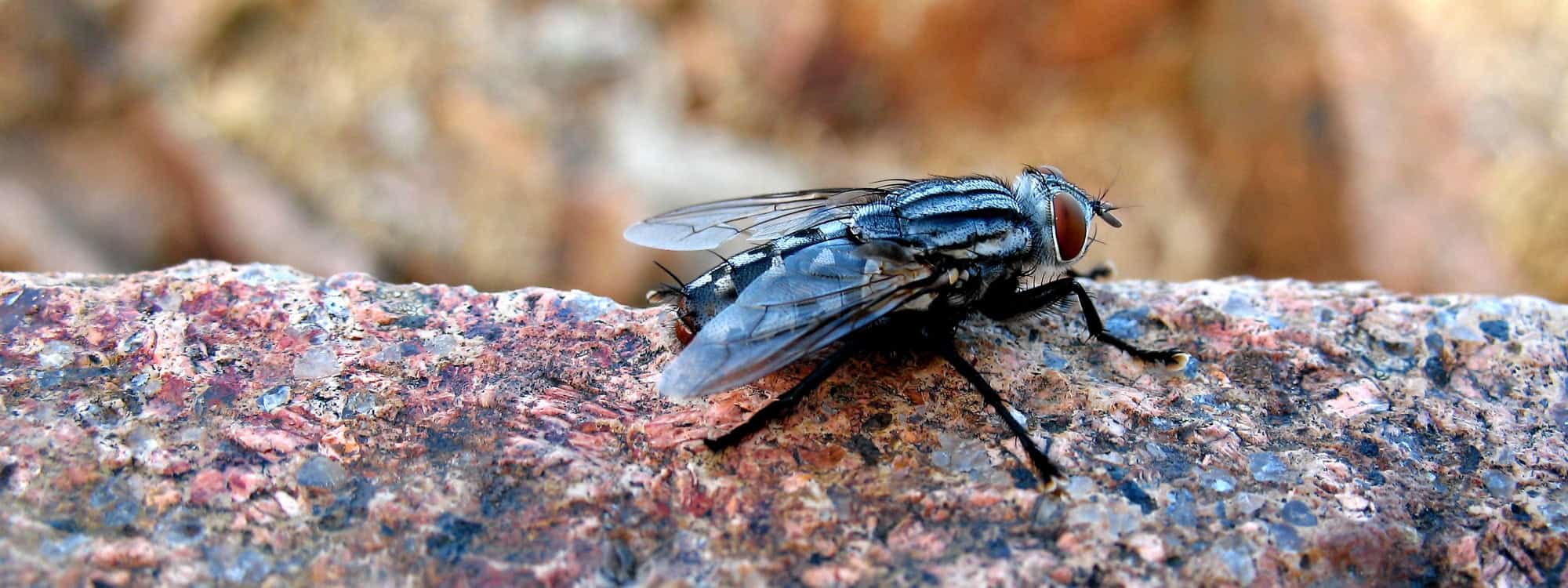Flies
Flies are a common presence in Muskoka, particularly during the warmer months. While many of them can be a nuisance, they play essential roles in ecosystems, including decomposing organic matter and pollinating plants. Understanding the various types of flies in Muskoka can help residents distinguish between those that are simply bothersome and those that are beneficial or necessary for natural processes.
In Muskoka, the most common flies you may encounter are:
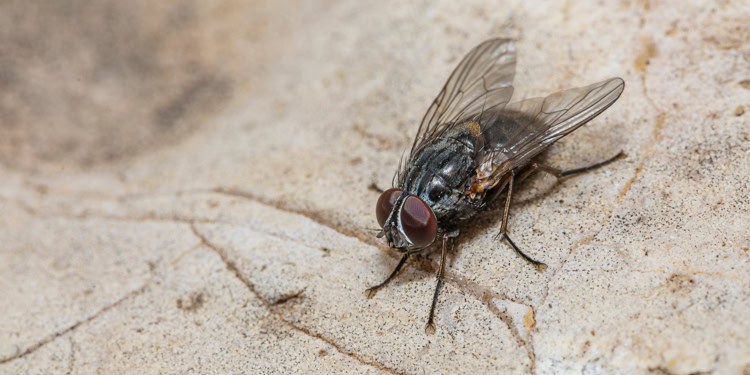
House Flies:
House flies are ubiquitous in Muskoka, often found around homes and other human dwellings. These flies are attracted to food waste, garbage, and decaying organic matter, making them especially common in kitchens or outdoor dining areas. House flies are small, about 6 to 8 mm in length, and have a dull gray color with four dark stripes on their thorax. While they are not harmful in terms of stings or bites, house flies can carry pathogens and spread diseases by contaminating surfaces they land on. Keeping food covered and ensuring proper waste disposal can help minimize house fly activity.
Cluster Flies:
Cluster flies are a seasonal nuisance in Muskoka, especially during the fall and winter. These flies are larger than house flies and have a dull, dark grayish appearance. They are known for seeking shelter in attics, wall voids, and other hidden spaces in homes as they prepare to hibernate. Though cluster flies are not harmful and do not bite, their presence can be bothersome in large numbers as they seek warmth. Prevention involves sealing cracks and crevices in buildings and removing any flies that manage to get inside before they can settle into hibernation.
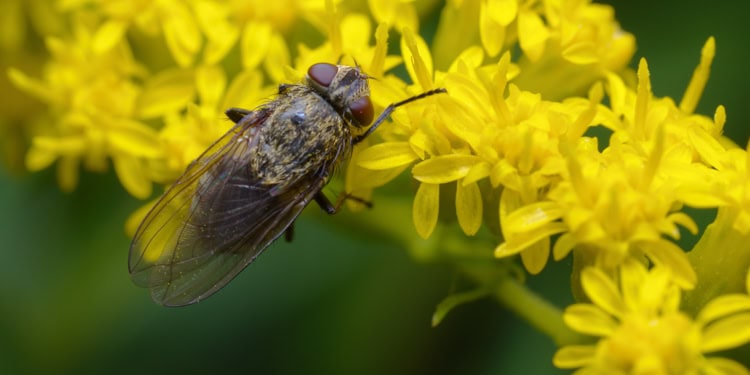
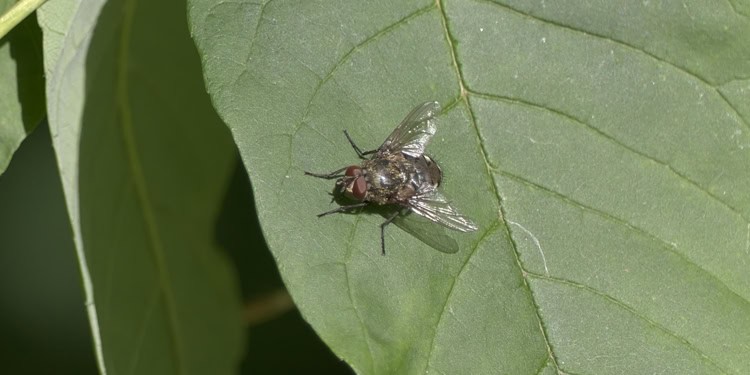
Black Flies:
Black flies, also known as buffalo gnats, are notorious for their biting habits. They are small, dark flies (usually 3 to 5 mm long) that are most commonly found near rivers, streams, and other moving bodies of water. Black flies are especially active in the spring and early summer, swarming in large numbers. The female black fly is the one that bites, and their bites can cause itching and swelling. These flies play a role in the ecosystem by feeding on plant nectar and decomposing organic material, but their bites can be quite irritating for outdoor enthusiasts in Muskoka.
Horse Flies:
Horse flies are larger, more aggressive flies, often measuring between 10 to 20 mm in length. These flies are attracted to the carbon dioxide and heat emitted by mammals, which is why they tend to be found around horses, livestock, and humans. Horse flies can deliver painful bites that are not only irritating but can cause allergic reactions in some people. Though they are less common in urban areas, they are frequently found in Muskoka’s rural and forested areas. Horse flies are pollinators, but their bites make them a dreaded nuisance during the summer months.
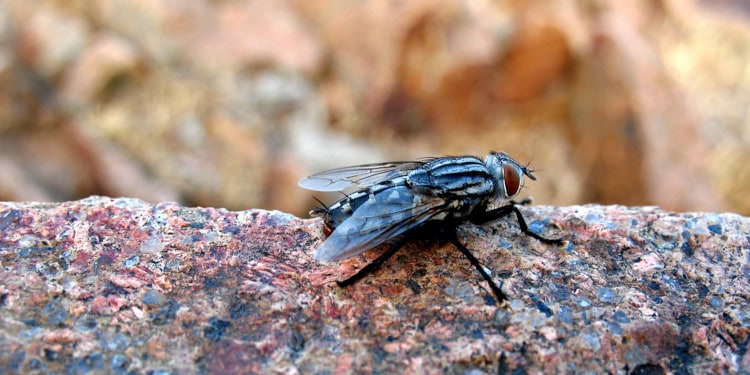
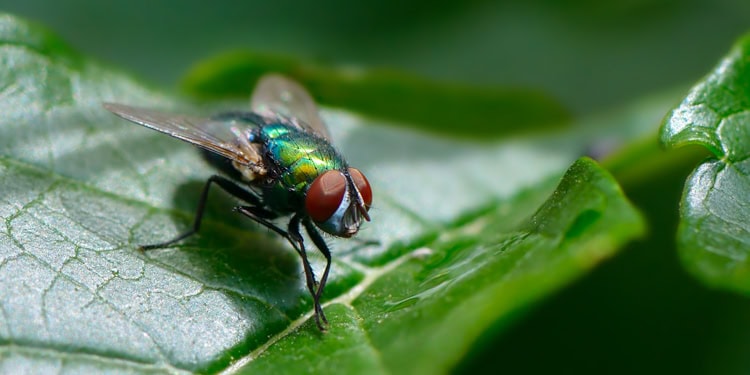
Blow Flies:
Blow flies are metallic in appearance, often shiny green or blue, and are typically seen around decaying organic matter, such as garbage or dead animals. These flies are important scavengers, aiding in the decomposition process, but they can be a nuisance when they enter homes, particularly in late spring and summer. Blow flies are larger than house flies, often measuring 10 to 14 mm in length. Their presence in Muskoka is particularly common around areas where animals may have died or where waste is not properly managed. Although they don’t bite, they can be carriers of bacteria and other pathogens.
Understanding the behaviors and roles of honey bees, bumble bees, and carpenter bees helps to highlight their importance in nature. These bees provide essential pollination services that benefit wild ecosystems, local agriculture, and the beauty of Muskoka’s landscapes. While bees may occasionally become a nuisance in gardens or around homes, they are vital to the environment and should be protected whenever possible. If you encounter a bee nest or swarm, it’s often best to consult with a local expert or beekeeper for safe management and relocation.
By appreciating and supporting the role of these beneficial insects, Muskoka residents can help foster a healthier, more vibrant ecosystem.

